Serving 364 students in grades Kindergarten-6, Kelso (William H.) Elementary School ranks in the bottom 50% of all schools in California for overall test scores (math proficiency is bottom 50%, and reading proficiency is bottom 50%).
The percentage of students achieving proficiency in math is 15% (which is lower than the California state average of 33%). The percentage of students achieving proficiency in reading/language arts is 28% (which is lower than the California state average of 47%).
The student:teacher ratio of 24:1 is higher than the California state level of 21:1.
Quick Stats (2025)
- Grades: Kindergarten-6
- Enrollment: 364 students
- Student:Teacher Ratio: 24:1
- Overall Testing Rank: Bottom 50% in CA
- Math Proficiency: 15% (Btm 50%)
- Reading Proficiency: 28% (Btm 50%)
- Science Proficiency: ≤10% (Btm 50%)
- Source: National Center for Education Statistics (NCES), CA Dept. of Education
Top Rankings
Kelso (William H.) Elementary School ranks among the top 20% of public schools in California for:
Category
Attribute
Percent Eligible For Free Lunch
School Overview
Kelso (William H.) Elementary School's student population of 364 students has declined by 19% over five school years.
The teacher population of 15 teachers has declined by 16% over five school years.
Grades Offered
Grades Kindergarten-6
Total Students
364 students
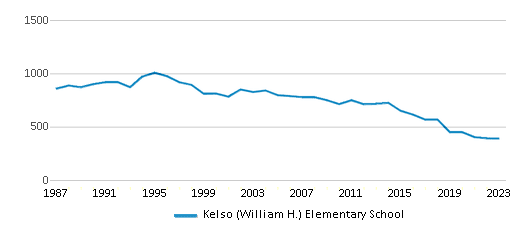
Gender %
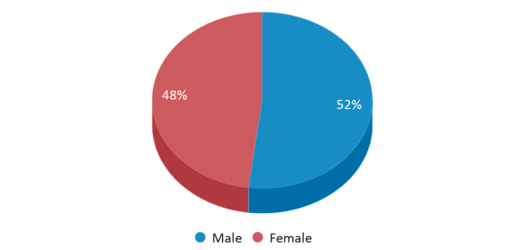
Total Classroom Teachers
15 teachers
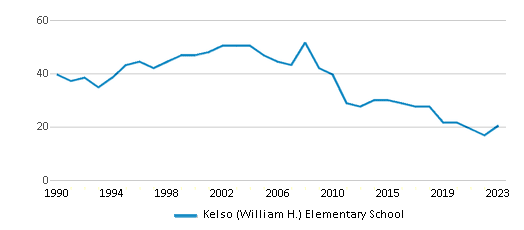
Students by Grade
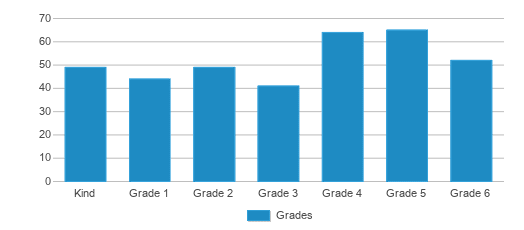
School Rankings
Kelso (William H.) Elementary School ranks within the bottom 50% of all 9,602 schools in California (based off of combined math and reading proficiency testing data).
The diversity score of Kelso (William H.) Elementary School is 0.56, which is less than the diversity score at state average of 0.63. The school's diversity has stayed relatively flat over five school years.
Overall Testing Rank
#7571 out of 9602 schools
(Bottom 50%)
(Bottom 50%)
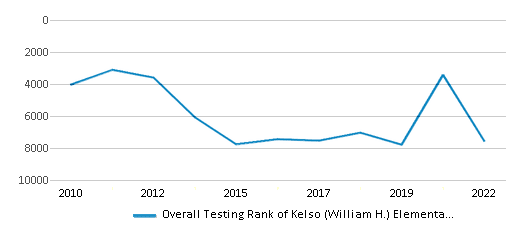
Math Test Scores (% Proficient)
15%
33%
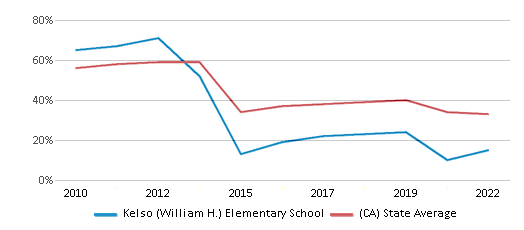
Reading/Language Arts Test Scores (% Proficient)
28%
47%
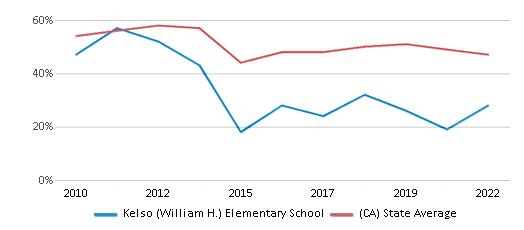
Science Test Scores (% Proficient)
≤10%
29%
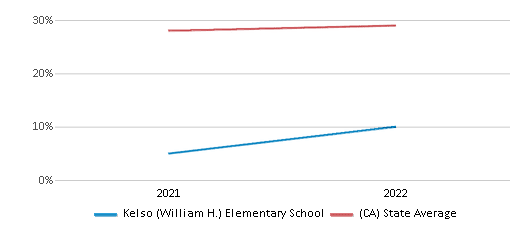
Student : Teacher Ratio
24:1
21:1
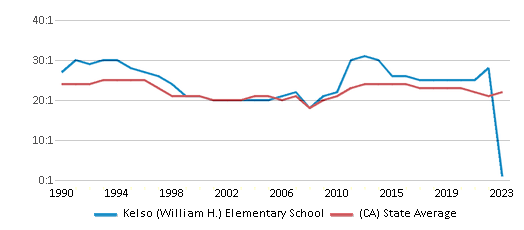
American Indian
1%
1%
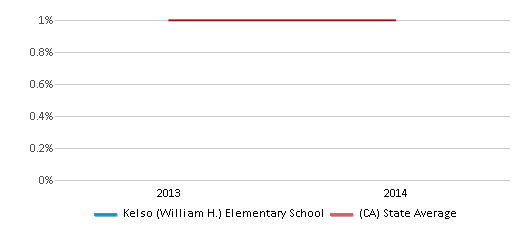
Asian
1%
12%
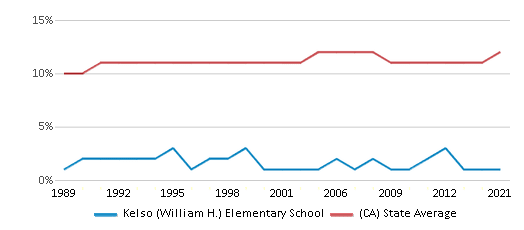
Hispanic
48%
56%
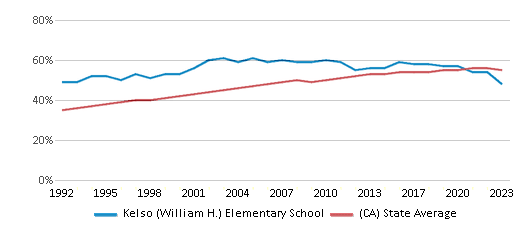
Black
46%
5%
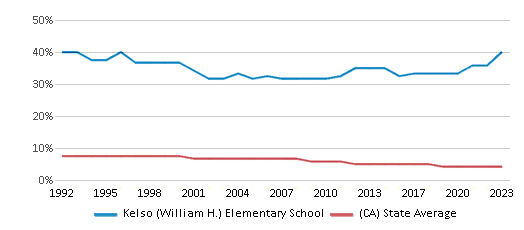
White
n/a
20%
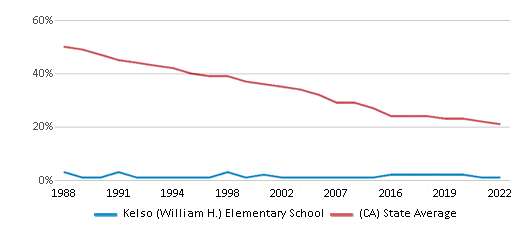
Hawaiian
1%
n/a
Two or more races
3%
6%
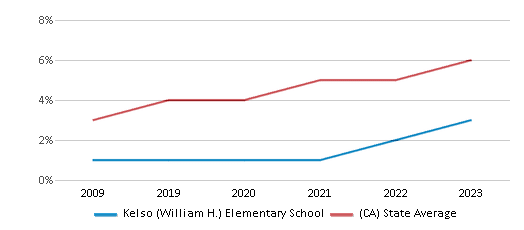
All Ethnic Groups
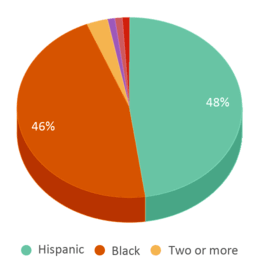
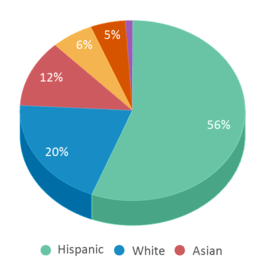

Eligible for Free Lunch
88%
54%
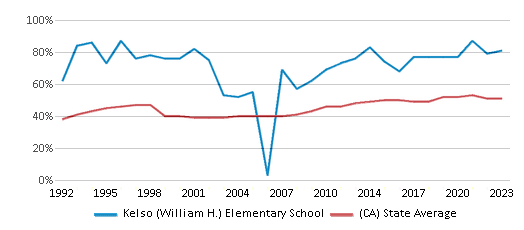
Eligible for Reduced Lunch
4%
8%
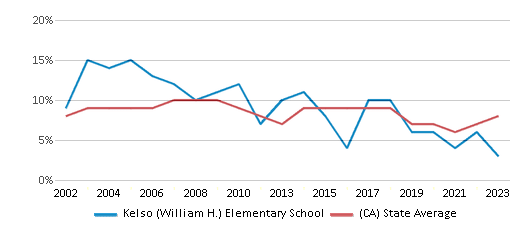
School Statewide Testing
School District Name
Source: National Center for Education Statistics (NCES), CA Dept. of Education
Profile last updated: 02/09/2025
Frequently Asked Questions
What is Kelso (William H.) Elementary School's ranking?
Kelso (William H.) Elementary School is ranked #7571 out of 9,602 schools, which ranks it among the bottom 50% of public schools in California.
What schools are Kelso (William H.) Elementary School often compared to?
Kelso (William H.) Elementary Schoolis often viewed alongside schools like Icef Inglewood Elementary Charter Academy by visitors of our site.
What percent of students have achieved state testing proficiency in math and reading?
15% of students have achieved math proficiency (compared to the 33% CA state average), while 28% of students have achieved reading proficiency (compared to the 47% CA state average).
How many students attend Kelso (William H.) Elementary School?
364 students attend Kelso (William H.) Elementary School.
What is the racial composition of the student body?
48% of Kelso (William H.) Elementary School students are Hispanic, 46% of students are Black, 3% of students are Two or more races, 1% of students are American Indian, 1% of students are Asian, and 1% of students are Hawaiian.
What is the student:teacher ratio of Kelso (William H.) Elementary School?
Kelso (William H.) Elementary School has a student ration of 24:1, which is higher than the California state average of 21:1.
What grades does Kelso (William H.) Elementary School offer ?
Kelso (William H.) Elementary School offers enrollment in grades Kindergarten-6
What school district is Kelso (William H.) Elementary School part of?
Kelso (William H.) Elementary School is part of Inglewood Unified School District.
School Reviews
5 4/2/2008
Kelso's academic program is excellent focusing on the state requirements and preparing the students for state testing. The staff assist the students in areas of need based on the previous year state test. The student's state tests are looked at individually and as a whole grade level for need of improvement. Additional help to prepare the students for testing is arranged before school, after school and half of their lunch period. The principal, administrators and staff are helpful and concerned about the children's education and well being. Music is limited, however, a music director was contracted and taught the students to play the recorder. The students are honored with academic awards, attendance, student of the month, etc. The facility is a small version, but is clean and orderly. There is parent involvement, however, there is a need of more parent volunteers.
Review Kelso (William H.) Elementary School. Reviews should be a few sentences in length. Please include any comments on:
- Quality of academic programs, teachers, and facilities
- Availability of music, art, sports and other extracurricular activities
Recent Articles

What Is A Charter School?
Explore the world of charter schools in this comprehensive guide. Learn about their history, how they operate, and the pros and cons of this educational innovation. Discover key facts about charter schools, including admission policies, demographics, and funding, as well as what to look for when considering a charter school for your child.

10 Reasons Why High School Sports Benefit Students
Discover the 10 compelling reasons why high school sports are beneficial for students. This comprehensive article explores how athletics enhance academic performance, foster personal growth, and develop crucial life skills. From improved fitness and time management to leadership development and community representation, learn why participating in high school sports can be a game-changer for students' overall success and well-being.

February 05, 2025
Understanding the U.S. Department of Education: Structure, Impact, and EvolutionWe explore how the Department of Education shapes American education, from its cabinet-level leadership to its impact on millions of students, written for general audiences seeking clarity on this vital institution.





